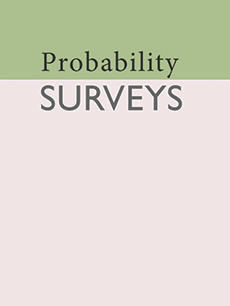Abstract
We discuss a family of random fields indexed by a parameter $s\in\mathbb{R} $ which we call the fractional Gaussian fields, given by \[\mathrm{FGF}_{s}(\mathbb{R} ^{d})=(-\Delta)^{-s/2}W, \] where $W$ is a white noise on $\mathbb{R}^{d}$ and $(-\Delta)^{-s/2}$ is the fractional Laplacian. These fields can also be parameterized by their Hurst parameter $H=s-d/2$. In one dimension, examples of $\mathrm{FGF}_{s}$ processes include Brownian motion ($s=1$) and fractional Brownian motion ($1/2<s<3/2$). Examples in arbitrary dimension include white noise ($s=0$), the Gaussian free field ($s=1$), the bi-Laplacian Gaussian field ($s=2$), the log-correlated Gaussian field ($s=d/2$), Lévy’s Brownian motion ($s=d/2+1/2$), and multidimensional fractional Brownian motion ($d/2<s<d/2+1$). These fields have applications to statistical physics, early-universe cosmology, finance, quantum field theory, image processing, and other disciplines.
We present an overview of fractional Gaussian fields including covariance formulas, Gibbs properties, spherical coordinate decompositions, restrictions to linear subspaces, local set theorems, and other basic results. We also define a discrete fractional Gaussian field and explain how the $\mathrm{FGF}_{s}$ with $s\in(0,1)$ can be understood as a long range Gaussian free field in which the potential theory of Brownian motion is replaced by that of an isotropic $2s$-stable Lévy process.
Citation
Asad Lodhia. Scott Sheffield. Xin Sun. Samuel S. Watson. "Fractional Gaussian fields: A survey." Probab. Surveys 13 1 - 56, 2016. https://doi.org/10.1214/14-PS243
Information





